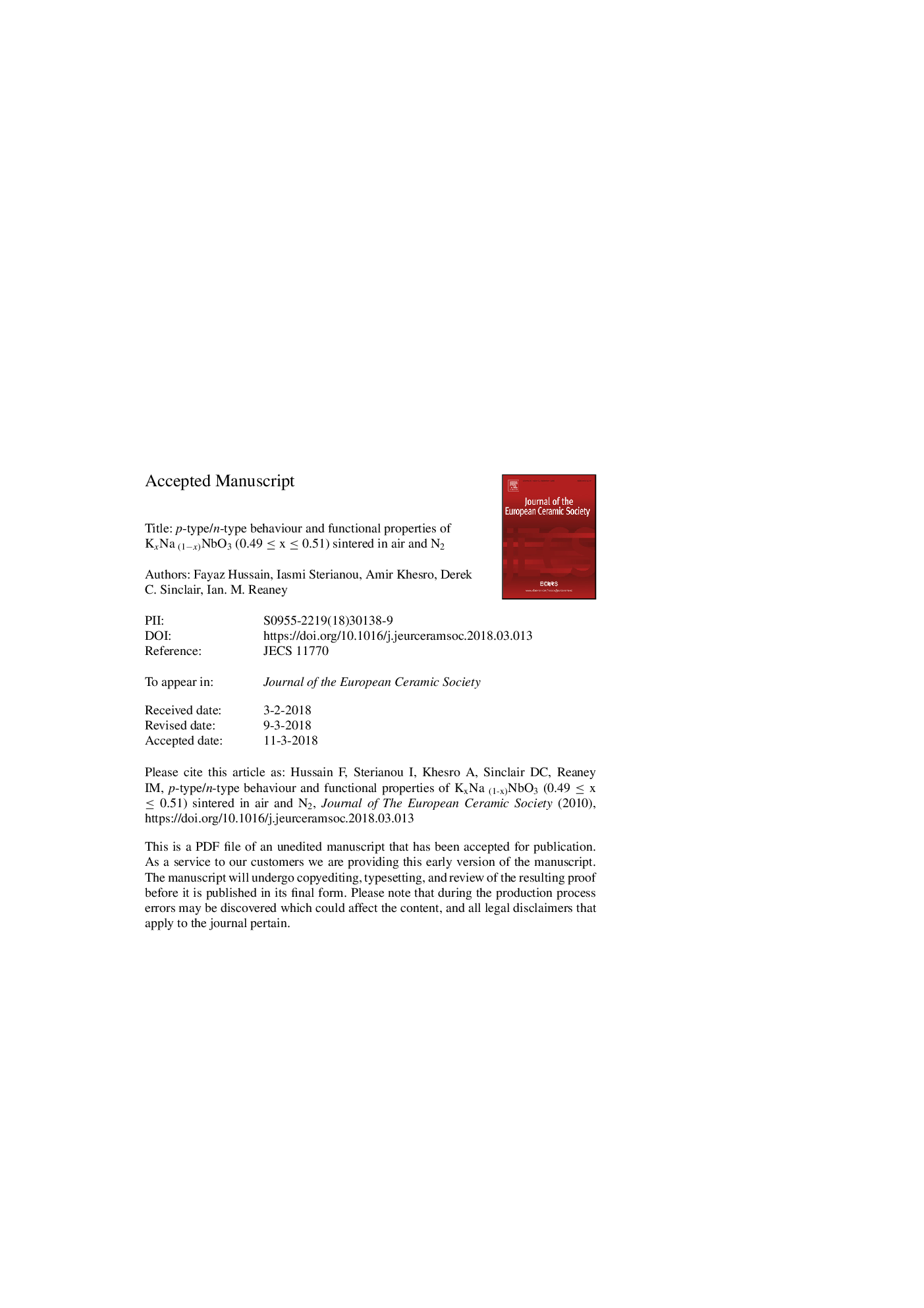| Article ID | Journal | Published Year | Pages | File Type |
|---|---|---|---|---|
| 7898142 | Journal of the European Ceramic Society | 2018 | 25 Pages |
Abstract
Potassium sodium niobate (KNN) is a potential candidate to replace lead zirconate titanate in sensor and actuator applications but there are many fundamental science and materials processing issues to be understood before it can be used commercially, including the influence of composition and processing atmosphere on the conduction mechanisms and functional properties. Consequently, KNN pellets with different K/Na ratios were sintered to 95% relative density in air and N2 using a conventional mixed oxide route. Oxygen vacancies (VO
-
- ) played a major role in the semi-conduction mechanism in low p(O2) for all compositions. Impedance spectroscopy and thermo-power data confirmed KNN to be n-type in low p(O2) in contradiction to previous reports of p-type behaviour. The best piezoelectric properties were observed for air- rather than N2-sintered samples with d33â¯=â¯125â¯pC/N and kpâ¯=â¯0.38 obtained for K0.51Na0.49NbO3.
-
- ) played a major role in the semi-conduction mechanism in low p(O2) for all compositions. Impedance spectroscopy and thermo-power data confirmed KNN to be n-type in low p(O2) in contradiction to previous reports of p-type behaviour. The best piezoelectric properties were observed for air- rather than N2-sintered samples with d33â¯=â¯125â¯pC/N and kpâ¯=â¯0.38 obtained for K0.51Na0.49NbO3.
Related Topics
Physical Sciences and Engineering
Materials Science
Ceramics and Composites
Authors
Fayaz Hussain, Iasmi Sterianou, Amir Khesro, Derek C. Sinclair, Ian M. Reaney,
